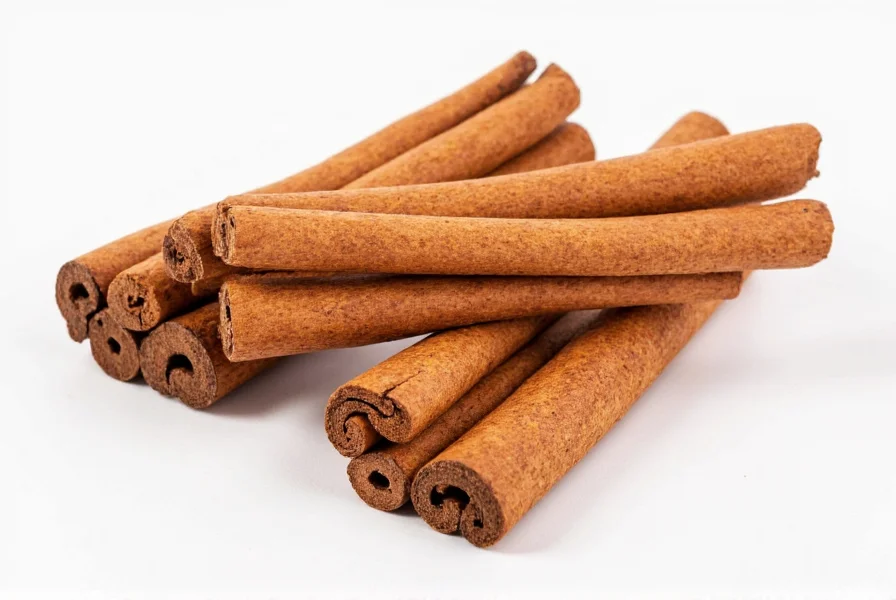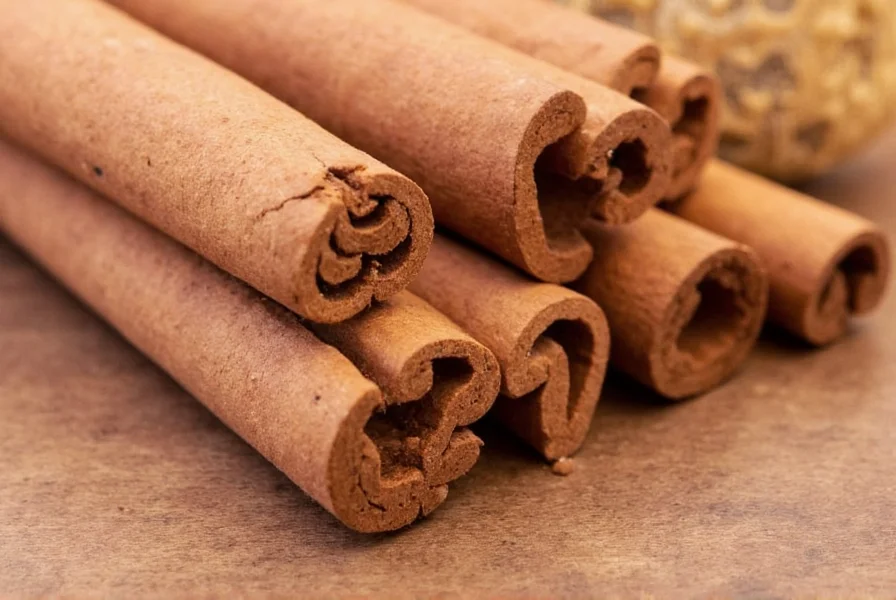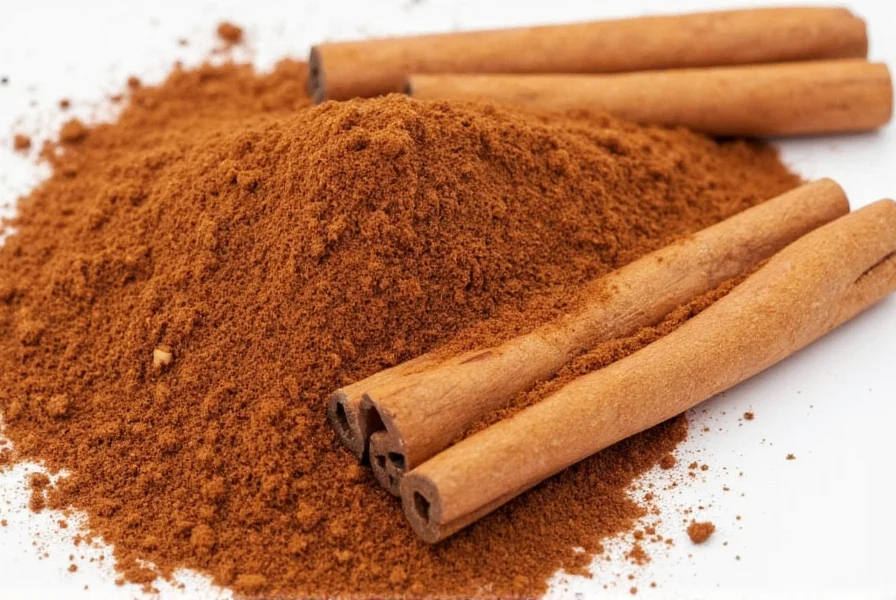When exploring the world of spices, understanding the difference between ceylon and cassia cinnamon is essential for both culinary excellence and health considerations. While most ‘regular’ cinnamon sold globally is actually Cassia (Cinnamomum cassia), authentic Ceylon cinnamon offers distinctive qualities that set it apart as a superior choice for discerning cooks and health-conscious consumers.
Understanding Ceylon Cinnamon: The True Cinnamon
Ceylon cinnamon’s botanical name, Cinnamomum verum, literally translates to ‘true cinnamon,’ reflecting its status as the original cinnamon variety prized since ancient times. This delicate spice comes from the inner bark of trees cultivated primarily in Sri Lanka, with smaller productions in Madagascar and the Seychelles. The harvesting process involves carefully removing multiple thin layers of bark that naturally curl into elegant, multi-layered quills—a distinctive characteristic that helps identify genuine Ceylon cinnamon.

Key Differences: Ceylon vs. Cassia Cinnamon
The most common cinnamon found in supermarkets is actually Cassia, which comes from China and Indonesia. While both spices share cinnamon’s characteristic warmth, they differ significantly in composition, flavor profile, and health implications. Understanding these differences between ceylon and cassia cinnamon is crucial for making informed choices.
| Characteristic | Ceylon Cinnamon | Cassia Cinnamon |
|---|---|---|
| Scientific Name | Cinnamomum verum | Cinnamomum cassia |
| Origin | Sri Lanka (formerly Ceylon) | China, Indonesia |
| Appearance | Multiple thin layers, delicate scroll, tan color | Thick, single-layer, dark reddish-brown |
| Taste Profile | Subtle, sweet, citrusy notes | Stronger, more pungent, slightly bitter |
| Coumarin Content | Approximately 0.017g/kg (very low) | Approximately 2.1-6.6g/kg (very high) |
| Price Point | Higher (typically 5-10x Cassia) | More affordable |
Health Benefits of Ceylon Cinnamon: What Research Shows
When evaluating the health benefits of ceylon cinnamon, scientific research reveals several promising properties. Unlike Cassia, Ceylon’s minimal coumarin content makes it suitable for regular consumption without health concerns. Studies indicate Ceylon cinnamon may:
- Support healthy blood sugar levels through improved insulin sensitivity
- Provide antioxidant protection with potent polyphenols
- Exhibit anti-inflammatory properties that may benefit cardiovascular health
- Contain antimicrobial compounds effective against certain bacteria and fungi
- Potentially support cognitive function through neuroprotective effects
A 2020 review published in the journal Nutrients highlighted that while both cinnamon varieties show health-promoting properties, Ceylon’s safety profile makes it the preferred choice for therapeutic applications. The European Food Safety Authority specifically recommends Ceylon over Cassia due to coumarin concerns in the latter.
Safety Considerations: Why Coumarin Matters
The coumarin content in cinnamon varieties represents the most critical difference when considering regular consumption. Coumarin, while naturally occurring, can cause liver toxicity in sensitive individuals when consumed in significant quantities. Cassia cinnamon contains up to 1,000 times more coumarin than Ceylon.
For context, the acceptable daily intake of coumarin established by the European Food Safety Authority is 0.1 mg per kilogram of body weight. A single teaspoon of Cassia cinnamon may contain enough coumarin to exceed this limit for an average adult, while you would need to consume over 30 teaspoons of Ceylon cinnamon to reach the same level.
How to Identify Authentic Ceylon Cinnamon
Learning how to identify real ceylon cinnamon prevents accidental purchase of inferior or potentially harmful substitutes. Look for these characteristics:
- Physical structure: Multiple thin, papery layers forming a delicate, hollow tube (like a cigarette)
- Color: Light tan to medium brown (not dark reddish-brown)
- Texture: Brittle and easily crumbles when bent
- Aroma: Subtle, sweet fragrance with citrus notes
- Taste: Complex flavor that’s sweet with mild heat (not overwhelmingly spicy)
When purchasing ground cinnamon, look for products specifically labeled “Ceylon” or “Cinnamomum verum” rather than generic “cinnamon.” Reputable specialty spice merchants typically provide origin information, while supermarket brands often sell Cassia as “cinnamon” without distinction.

Culinary Applications and Recommendations
Ceylon cinnamon’s delicate flavor profile makes it particularly suitable for dishes where subtle spice notes enhance rather than dominate. Consider these applications when deciding is ceylon cinnamon better than regular cinnamon for your recipe:
- Baking: Ideal for delicate pastries, custards, and light-colored cakes where its subtle flavor won’t overpower
- Beverages: Perfect for chai, hot chocolate, and coffee where its citrus notes complement other flavors
- Desserts: Excellent in rice pudding, fruit compotes, and ice cream
- Savory dishes: Works beautifully in Moroccan tagines, Persian rice dishes, and certain seafood preparations
- Breakfast: Superior in oatmeal, yogurt, and smoothies for daily consumption
When substituting Ceylon for Cassia in recipes, use approximately 25-50% more Ceylon to achieve comparable flavor intensity, as its profile is more delicate. For health-focused applications like daily cinnamon water or golden milk, Ceylon is unequivocally the better choice due to its safety profile.
Storage Tips for Maximum Freshness
To preserve the volatile oils that give cinnamon its distinctive flavor and potential health benefits of ceylon cinnamon, proper storage is essential:
- Store in an airtight container away from light, heat, and moisture
- Whole quills retain freshness significantly longer than ground cinnamon (up to 2-3 years vs. 6-12 months)
- Consider freezing quills for long-term storage without flavor degradation
- Grind small quantities as needed for optimal flavor and potency
Properly stored Ceylon cinnamon maintains its delicate flavor profile and potential therapeutic compounds far better than improperly stored spice, making correct storage crucial for maximizing both culinary and health benefits.
Conclusion: Making an Informed Choice
Understanding the differences between ceylon and cassia cinnamon empowers consumers to make choices aligned with their culinary preferences and health goals. While Cassia offers a stronger, more familiar cinnamon flavor at a lower price point, Ceylon provides a more complex flavor profile and significantly better safety characteristics for regular consumption.
For occasional use in robust dishes, Cassia may suffice, but for daily consumption, delicate recipes, or health-focused applications, Ceylon cinnamon represents the superior choice. By learning how to identify real ceylon cinnamon and understanding its unique properties, consumers can fully appreciate why this ‘true cinnamon’ has been prized for centuries.
Frequently Asked Questions
Is Ceylon cinnamon worth the higher price compared to regular cinnamon?
Yes, Ceylon cinnamon offers distinct advantages that justify its higher cost for regular users. Its significantly lower coumarin content makes it safer for daily consumption, while its delicate, complex flavor profile enhances rather than overpowers dishes. For health-focused applications or daily use in beverages and breakfast foods, the investment in authentic Ceylon provides both safety and superior culinary results.
How much Ceylon cinnamon can I safely consume daily?
Due to its minimal coumarin content (approximately 0.017g/kg), you can safely consume up to 1-2 teaspoons of Ceylon cinnamon daily without health concerns—significantly more than the recommended limit for Cassia cinnamon. This makes Ceylon ideal for daily use in smoothies, oatmeal, or golden milk recipes where consistent consumption provides potential health benefits without risk.
Can I substitute Ceylon cinnamon for Cassia in recipes?
Absolutely, but with adjustments. Ceylon has a more delicate flavor, so you may need 25-50% more to achieve similar intensity. In delicate recipes like custards, light cakes, or beverages, Ceylon often works better without modification. For robust dishes like apple pie or holiday cookies, you might prefer the stronger Cassia flavor, though Ceylon provides a more complex, nuanced result.
Does Ceylon cinnamon really help with blood sugar control?
Research suggests Ceylon cinnamon may support healthy blood sugar levels through improved insulin sensitivity. A 2019 meta-analysis in Diabetes Research and Clinical Practice found cinnamon supplementation associated with modest reductions in fasting glucose. While not a replacement for medical treatment, incorporating 1-2 teaspoons of Ceylon cinnamon daily into a balanced diet may provide supportive benefits for metabolic health.











 浙公网安备
33010002000092号
浙公网安备
33010002000092号 浙B2-20120091-4
浙B2-20120091-4